Hatshepsutas Policies Continued After Her Death
The Temple of Hatshepsut at Deir El Bahri
The Temple of Hatshepsut is not only a memorial temple that honors Queen Hatshepsut, it is also one of the greatest Egyptian architectural achievements. Designed by Senenmut (Hatshepsut's steward and architect), this mortuary temple closely resembles the classical Greek architecture of 1,000 years later.
Located on the west bank of the Nile, opposite the city of Luxor (ancient Thebes), Hatshepsut's temple is part of the Theban Necropolis. Built in a half circle of cliffs, this memorial temple marks the entrance to the Valley of the Kings. Djeser Djeseru (holy of holiest) is the name of the main building of the temple of Hatshepsut.
Construction of Hatshepsut's Temple
Hatshepsut constructed many monuments and buildings. She also had many statues of herself erected at the sites of these monuments and buildings to impress upon the ancient Egyptian people her standing as a great leader and Pharaoh. Hatshepsut's Temple at Deir El Bahri is her greatest achievement. It took 15 years to complete. The site was chosen because of its prime location. The ancient Egyptians considered this valley to be sacred for its connection to the funerary goddess Hathor.
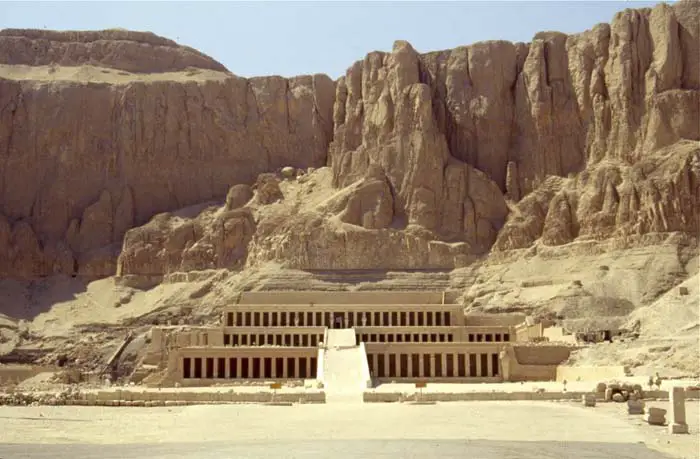
© Charlie Phillips - The Temple of Hatshepsut
The First Level
The Temple of Hatshepsut has three levels. Leading up to the temple is a 100 foot causeway that in ancient Egyptian times was probably lined with sphinxes. During that time, the first level boasted exotic trees and shrubbery like Frankincense from Hatshepsut's trading expeditions to the land of Punt (Punt is likely Ethiopia, Eritrea or northern Somalia today). A colonnade existed with square pillars that were home to many intricate and exquisite reliefs. Many of these reliefs depicted Hatshepsut on her many trips to Punt. Unfortunately, after her death, these were all destroyed. All that remains are reliefs depicting Thutmose III, and scenes of the ancient Egyptians quarrying and then transporting two large obelisks down the Nile River.
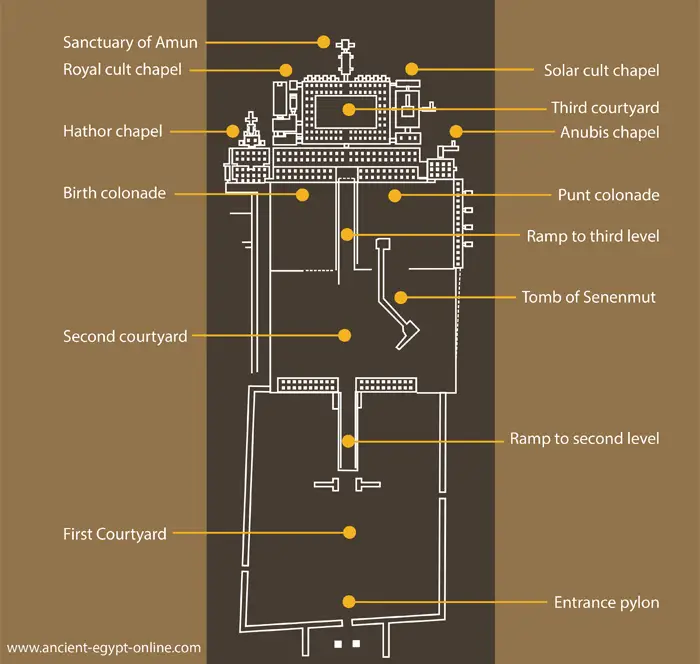
Layout of the Temple of Hatshepsut
The Second Level
One of the significant aspects of the second level is that it contains one of the first ever recorded pictorial documentations of a trade expedition. Specifically, the relief retells Hatshepsut's high official, Pa-nahsy's journey to Punt which lasted from 1482 BC to 1479 BC.
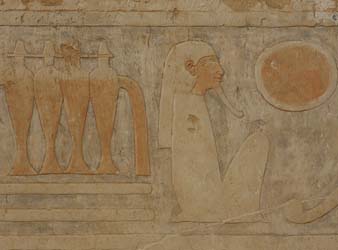
© Ian Gampon - Reliefs at the Temple of Hatshepsut
Here, there is a shrine for the Goddess Hathor. She is depicted with a woman's face and with cow's ears and is holding a musical instrument. Hatshepsut's birth is depicted on this level as well. It is sometimes called the Birth Colonnade. To validate her rule over Egypt even during Thutmose III's ascension into adulthood, she claimed to be the divine daughter of Amon Ra. In these reliefs, Amon Ra impregnates Queen Ahmose and discloses that Hatshepsut will rule over Egypt.
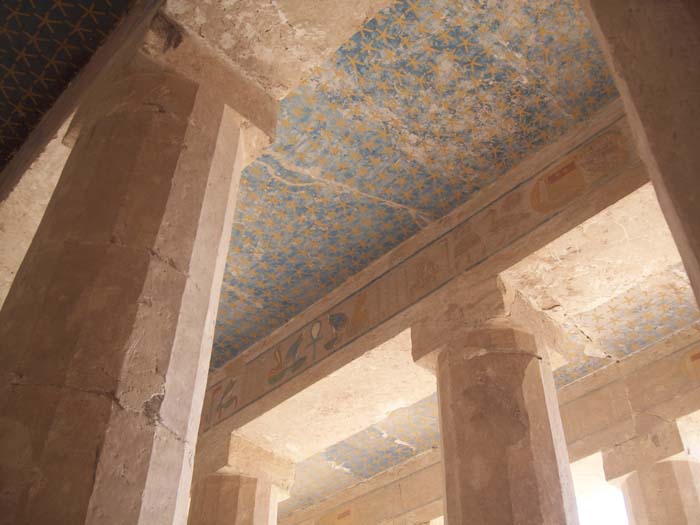
© isawnyu - Reliefs on the Birth Colonnade
The keeper of the Theban Necropolis, Anubis (the god of mummification and afterlife), has a special chapel dedicated to him on the northern end of the colonnade.
The Third Level
Statues of Horus, in falcon form, flank the ramp that leads from the second courtyard to the third level. This third level houses a portico with dual rows of columns that face the front. Behind this is a courtyard and several chambers running off of it. Enormous statues of Hatshepsut made up the outlying columns, with octagonal shaped columns along the inside.
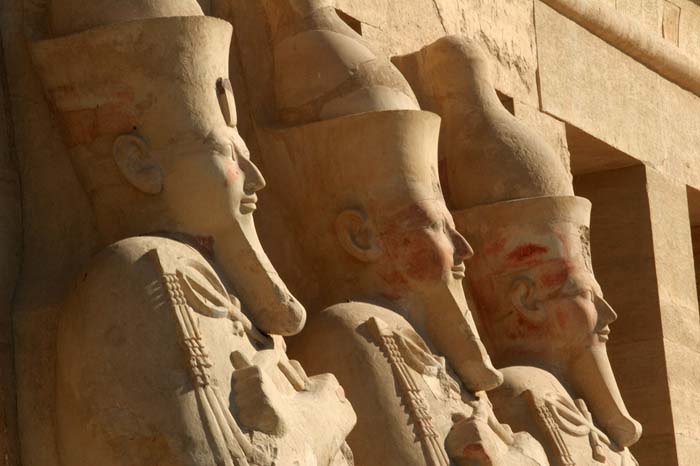
© Ray Euden - Osiris statues of Hatshepsut
Quick Facts About The Temple of Hatshepsut
- Reliefs abound in this temple. Some are of Hatshepsut's birth and her visit to Punt. Others exist of marine fauna with clear zigzag lines representing water. Still others exist of people reaching their tree houses by ladders.
- Both the leader of Punt's wife and Hatshepsut are obese in the reliefs. Corpulence in the days of ancient Egypt was quite rare.
- Thutmose III ordered Hatshepsut's name and image chiseled from the walls after her death. He built his own temple directly to the west of hers, across the Nile.
- Even though Thutmose III was responsible for much of the damage and desecration of Hatshepsut's likeness, even more damage was caused by Akhenaten, an 18th dynasty heretic who only allowed images of the Aten, the sun god.
- From the third level (which is off limits to the public) a doorway leads to two chapels, one dedicated to the Royal cult, and the other dedicated to the solar cult. Here, all images of Hatshepsut that were destroyed were replaced with images of Thutmose III.
- Pointing directly toward Hatshepsut's tomb, the Sanctuary of Amun lies behind the third level courtyard.
- Temples of Ancient Egypt
- Ancient Egyptian Gods
- Queen Hatshepsut
Source: https://www.ancient-egypt-online.com/temple-of-hatshepsut.html
0 Response to "Hatshepsutas Policies Continued After Her Death"
Post a Comment